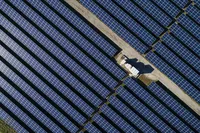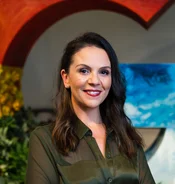Advancing renewable energy in Australia through collaboration

Since Google was founded in 1998, we have built sustainability into everything we do. We set the goal to achieve net zero emissions across our operations by 2030. This involves running on carbon-free energy 24/7 on every grid where we operate.
Across Asia Pacific, the way we tackle our carbon, water, waste and ecological impact is tailored to each country. In every community we operate in, we want to support the ecosystems that are already in place. Expanding clean energy is critical for us to decarbonise operations, supply chains and reach net-zero emissions — and we think we can make an impact here that can expand access to clean energy at large.
This is why today, we’re announcing a new power purchase agreement (PPA) in Australia — an innovative collaboration between Google, AirTrunk, and OX2 that will advance our sustainability goals and add more renewable energy to Australia’s grid.
Advancing clean energy in Australia
The new PPA continues our work to promote the use of sustainable energy in our operations. Under the agreement, OX2 will develop a new solar farm in the Riverina district of New South Wales which is expected to add 25 megawatts (MW) of new renewable energy generation capacity into Australia’s energy grid.
Industry collaboration is key to tackling sustainability challenges, increasing renewable capacity, and building a carbon-free digital future here in Australia and across the Asia Pacific region. Damien Spillane of AirTrunk put it perfectly: “Developments like this are critical to accelerating progress towards a carbon-free future in Australia.”
We expect the new solar farm to start generating emissions-free energy in 2025.
As part of our broader Digital Future Initiative, this project not only helps us support local infrastructure to meet our climate commitments. I’m proud of partnerships like this which allow us to work towards our ambitious 2030 carbon-free energy goal.
Learn more about our goal to reach 24/7 carbon-free energy on our website.



